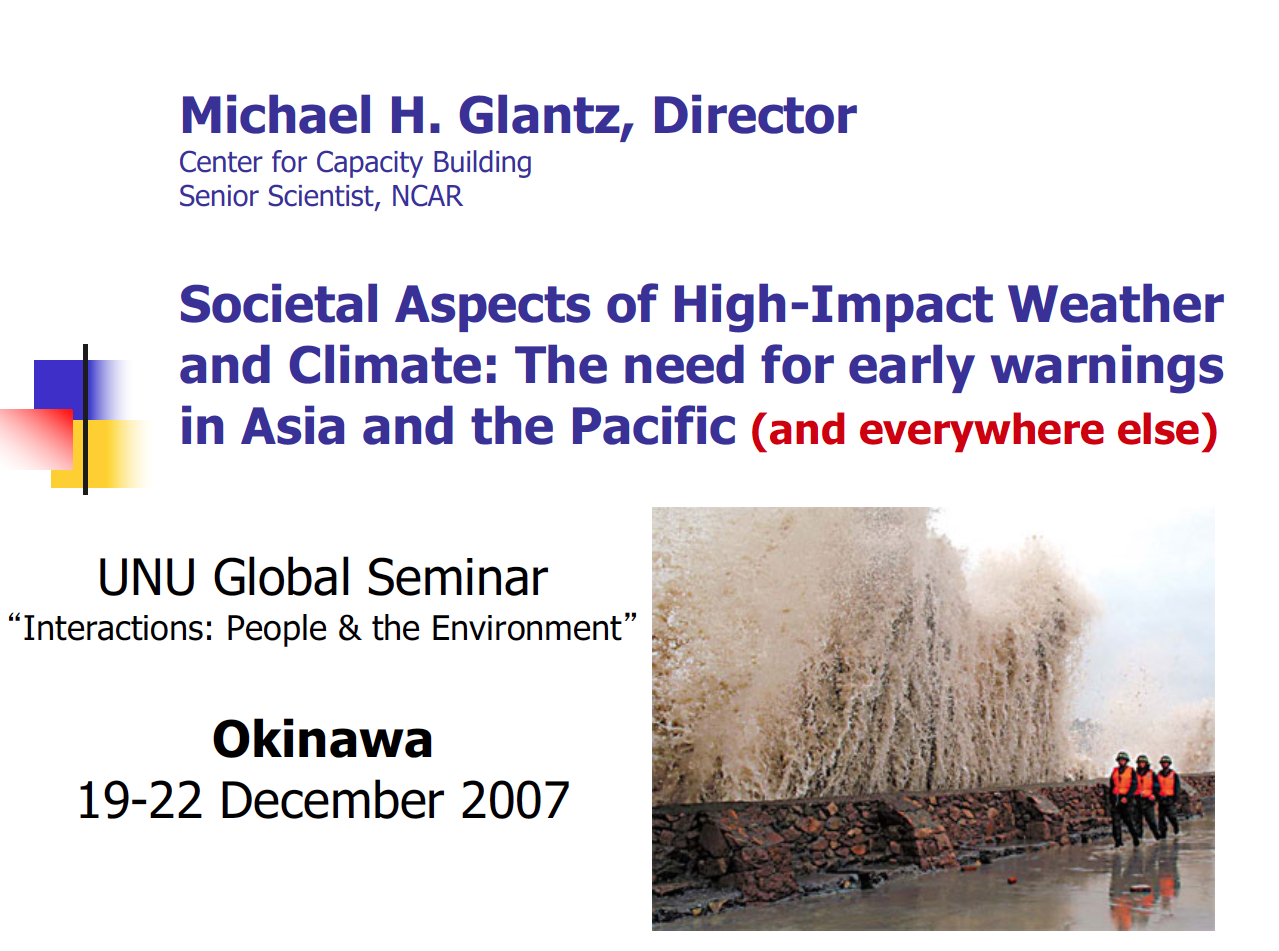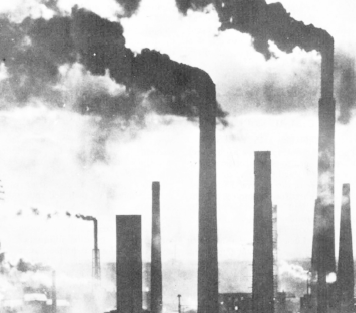The need for early warnings in Asia and the Pacific
10 years ago, Michael H. Glantz gave a presentation in Okinawa, Japan about how climate change is intensifying storms and crating superstorms. He explained that as global warming continues, the opposite colder extreme, will also emerge. Our definition of what constitutes an extreme weather event is evolving as storms become more brutal and their impacts become more widespread across the globe. As impoverished communities continue to be pushed deeper into disaster-prone areas, the need to recognize the realistic threat of storms increasing (in size and intensity) and therefore, their impacts becoming more devastating is of utmost importance. Although this presentation was given 10 years ago, it is relevant today.
Every 2-7 years the quasi-periodic anomaly of El Niño (the warmest of the three phases of the El Niño Southern Oscillation [ENSO]) disrupts the global weather pattern. Global Warming, El Niño and seasonal anomalies are the perfect breeding ground for creating superstorms that are not only gaining intensity, but frequency as well.
mhg-ppt-high.impact.wx


